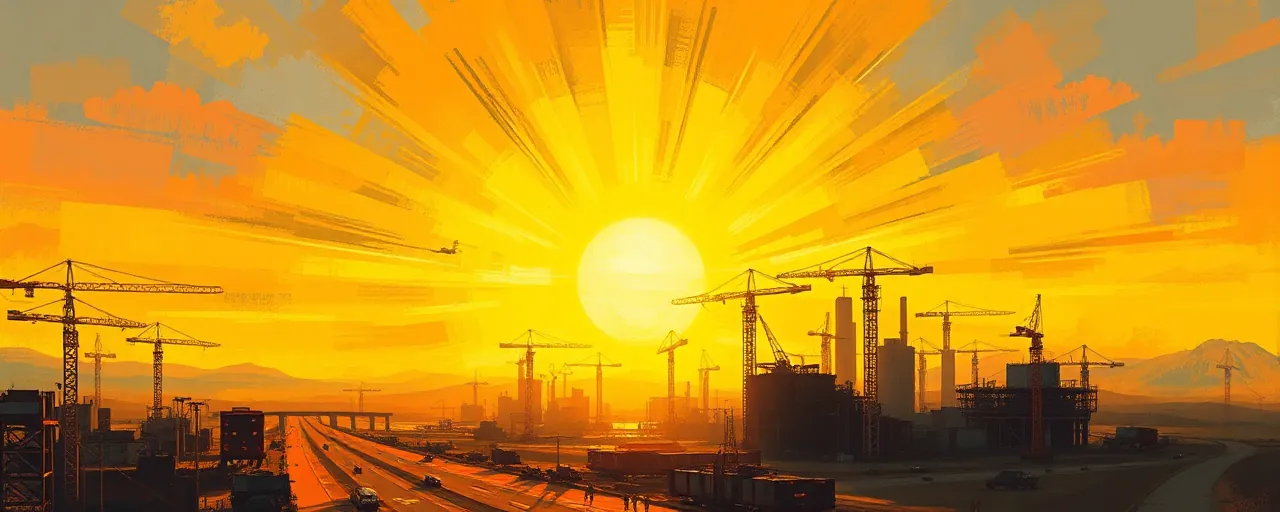A New Dawn for American Industry
President Donald Trump has ignited an economic firestorm, securing over $5 trillion in new U.S. investments within his first 100 days of 2025. This isn’t just a number; it’s a lifeline for American workers, promising 451,000 new jobs and a revitalized industrial heartland. From Michigan’s manufacturing plants to Delaware’s biologics facilities, the nation is witnessing a renaissance driven by policies that put America first.
The sheer scale of this achievement dwarfs the tepid promises of prior administrations. Companies like IBM, Apple, and NVIDIA are pouring hundreds of billions into U.S. soil, spurred by Trump’s unapologetic focus on tax relief and deregulation. These aren’t abstract figures; they translate to high-paying jobs for families in Ohio, Wisconsin, and beyond. The message is clear: America is open for business, and the world is taking notice.
Contrast this with the economic malaise of the past, when overregulation and high taxes stifled growth. Critics who championed bloated government programs and punitive tariffs on American firms now face a stark reality: their policies choked opportunity. Trump’s approach, rooted in empowering businesses, is proving them wrong with every new factory and job announcement.
This isn’t blind optimism. It’s a calculated strategy, building on the 2017 Tax Cuts and Jobs Act, which slashed corporate rates and unleashed a 20% surge in domestic investment. Today’s results are the fruit of that vision, amplified by a president who refuses to let bureaucracy smother ambition.
The Power of Pro-Growth Policies
The numbers tell the story. IBM’s $150 billion commitment to U.S. manufacturing, Merck’s $9 billion biologics expansion, and NVIDIA’s $500 billion AI infrastructure pledge are just the start. These investments, spurred by Trump’s tax cuts and deregulatory zeal, are transforming industries. Amgen, for instance, credits the 2017 tax reforms for its $900 million Ohio facility, which will ripple $12 billion through the economy.
Foreign companies are joining the charge. Japan’s Softbank, through Project Stargate, is investing $500 billion in AI data centers alongside OpenAI and Oracle. The United Arab Emirates and Saudi Arabia have pledged $1.4 trillion and $600 billion, respectively, over the coming years. This isn’t charity; it’s a vote of confidence in an America unshackled from red tape and punitive taxes.
Skeptics argue these investments would have happened anyway, pointing to global trends in AI and manufacturing. But this ignores the evidence. Since 2021, over $4 trillion in new investments have been announced, catalyzed by policies like the CHIPS and Science Act and Trump’s reciprocal tariffs. The 2017 tax cuts alone boosted capital expenditures by 20%, creating 5 million jobs. Without these, companies might still be parking cash overseas.
Opponents, often tethered to outdated notions of government-led growth, claim tax cuts favor the wealthy. Yet the data refutes this. The Opportunity Zones program, part of the 2017 reforms, has driven $50 billion into distressed communities, creating jobs where they’re needed most. Workers in places like South Dakota, where The Bel Group is investing $350 million, aren’t complaining about corporate greed; they’re celebrating paychecks.
Reshoring the American Dream
The reshoring trend is another feather in Trump’s cap. Over 300,000 manufacturing jobs were created in 2022 alone, with another 180,000 added in 2023, thanks to policies incentivizing domestic production. Hyundai’s $21 billion investment, including a Louisiana steel plant, and Stellantis’ $5 billion factory reopening in Illinois are proof that American manufacturing is back. Mexico now outranks China as our top trading partner, a shift driven by tariffs and supply chain realities.
This isn’t just about jobs; it’s about national security. Relying on foreign supply chains, as we did during the COVID-19 crisis, left us vulnerable. Trump’s tariffs on over 60 countries and incentives like the CHIPS Act are bringing critical industries home. TSMC’s $100 billion chipmaking investment is a case in point, bolstering our technological edge.
Some argue reshoring inflates costs, citing higher U.S. labor expenses. But automation and advanced manufacturing are closing the gap. The real cost is dependency on adversaries, a lesson learned the hard way. Trump’s policies prioritize resilience, ensuring we’re not at the mercy of global disruptions.
The AI Revolution Takes Root
Artificial intelligence is the future, and Trump is positioning America to lead it. NVIDIA’s $500 billion commitment to AI supercomputers, built entirely in the U.S., and Softbank’s Stargate Project are game-changers. Global AI infrastructure spending is projected to hit $1.4 trillion by 2027, with the U.S. reaping the lion’s share thanks to Trump’s vision.
This isn’t just about tech giants. Smaller players like NorthMark Strategies, with its $2.8 billion South Carolina supercomputing facility, show how AI is democratizing opportunity. By 2030, AI is expected to add $22.3 trillion to the global economy, and America’s early dominance will secure our prosperity for decades.
Detractors warn of regulatory risks or power supply constraints, but these are solvable problems. Trump’s deregulation agenda is streamlining approvals, and his energy policies are expanding capacity. The alternative—ceding AI leadership to rivals like China—is unthinkable.
A Legacy of Prosperity
Trump’s economic legacy is taking shape, and it’s one of unapologetic ambition. The $5 trillion in investments, 451,000 jobs, and global confidence in America’s future are no accident. They’re the result of policies that trust businesses to innovate, workers to thrive, and markets to deliver. From Corning’s 400 new Michigan jobs to Chobani’s $1.2 billion New York dairy plant, the benefits are tangible and widespread.
As America reclaims its industrial might, the naysayers are left scrambling. Their vision of heavy-handed regulation and tax hikes would stall this momentum, leaving workers and communities in the dust. Trump’s triumph proves that when government steps back, America steps up, ready to lead the world into a new era of prosperity.
